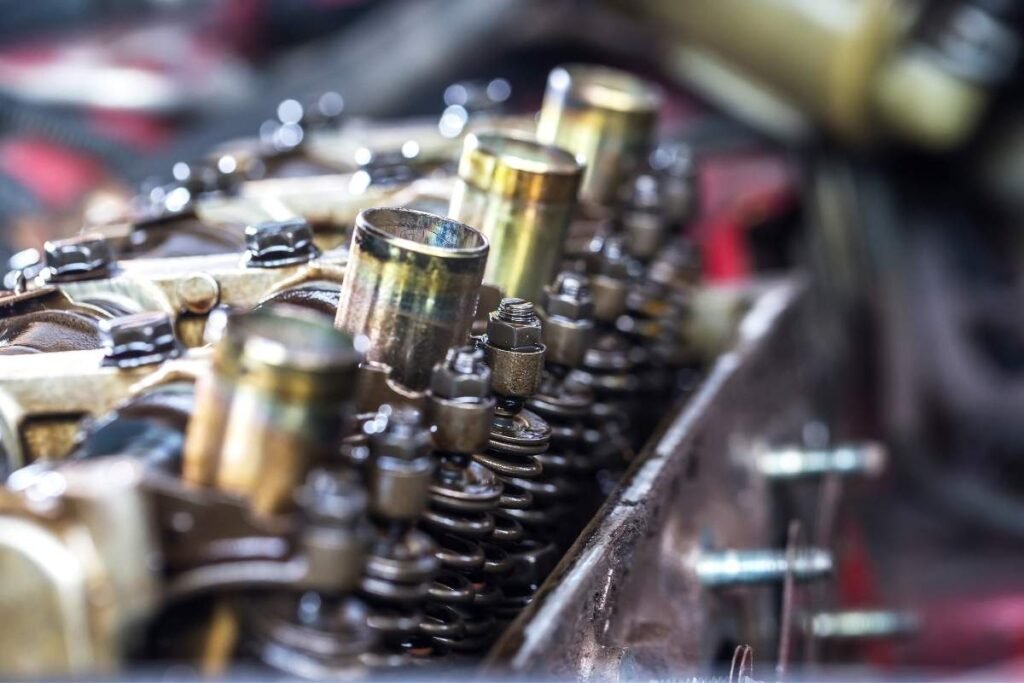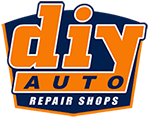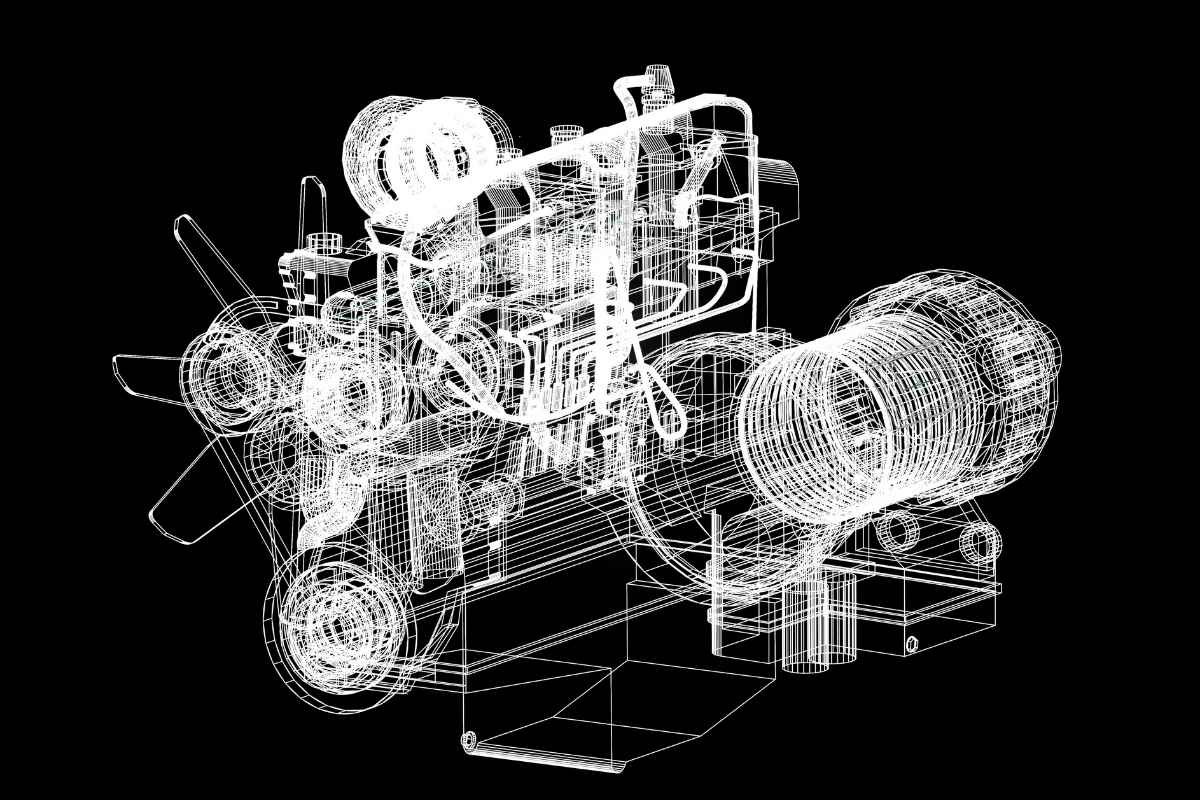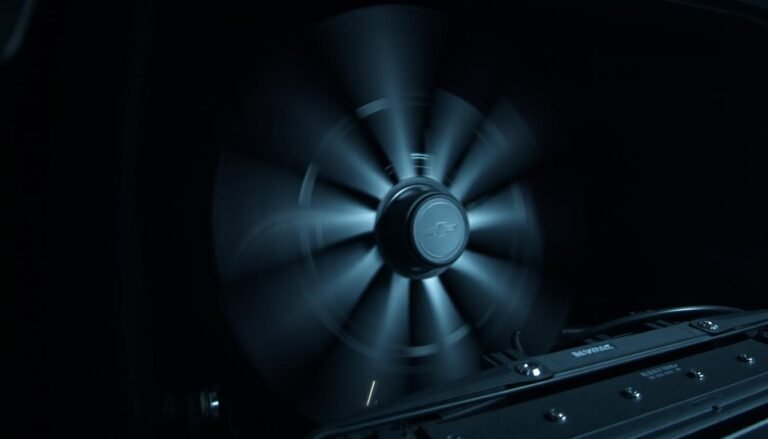Chevy 3.0 Duramax Problems, Causes and Diagnosis
The 3.0 Duramax is very famous among truck and SUV owners because it’s powerful with regard to towing, fuel economy, and performance. Like any motor, however, it does have its problems that affect overall performance and reliability.
Fuel injector malfunction, turbocharger failure, oil leaks, excessive oil consumption, and blocked DPF are among some of the common Chevy 3.0 Duramax problems.
All of these issues and symptoms need to be recognized early to avoid serious damage that can be costly to repair.

Chevy 3.0 Duramax Engine: Features and Specifications
The Chevy 3.0L Duramax has become synonymous with the fine balance of power, efficiency, and reliability in modern diesel powertrains.
Being a state-of-the-art engineering marvel, it is loved by drivers for its exceptional towing, high fuel economy, and smooth driving performance.
| Feature | Specification |
| Engine Type | Inline-six, turbocharged diesel |
| Displacement | 3.0 liters |
| Horsepower | 277 horsepower at approximately 3,750 RPM |
| Torque | 460 lb-ft of torque at around 1,500 RPM |
| Fuel Injection | High-pressure common-rail direct injection system with piezo injectors for precise fuel delivery |
| Turbocharger | Variable-geometry turbocharger for optimized boost control and efficiency |
| Compression Ratio | 15:1, contributing to a balance between performance and fuel efficiency |
| Block Material | Aluminum block with iron cylinder liners, combining light weight with strength |
| Crankshaft Material | Forged steel for enhanced durability and longevity |
| Cylinder Head | Dual overhead camshafts (DOHC) with four valves per cylinder for improved airflow and combustion |
| Cooling System | Advanced water-cooled system with an integrated oil cooler for temperature regulation |
| Transmission Pairing | Typically mated with a 10-speed automatic transmission, allowing seamless shifts and fuel efficiency |
| Fuel Economy | Known for delivering high miles per gallon (MPG) on highways, often exceeding 30 MPG |
| Emission Control Systems | Equipped with a diesel particulate filter (DPF) and selective catalytic reduction (SCR) for reduced emissions |
| Noise and Vibration Control | Engineered with acoustic dampening technology to minimize noise, vibration, and harshness (NVH) |
| Service Interval | Recommended oil change interval of approximately 7,500 miles (varies with driving conditions) |
| Towing Capacity | Capable of towing up to 9,300 lbs (varies by vehicle configuration) |
| Max Payload | Supports a payload capacity of up to 1,870 lbs (vehicle-dependent) |
| Fuel Type | Ultra-low sulfur diesel (ULSD) |
| Compliance | Meets stringent EPA and CARB emission standards |
Advantages and Innovations That Make It Unique
Lightweight Design:
Most of the diesel engines have an iron block. The 3.0 Duramax had an aluminum block with iron cylinder liners.
This further slashed the overall weight of the vehicle, hence improving fuel efficiency and handling.
Quiet Operation:
Chevy has taken serious measures to minimize most of the noise and vibration associated with diesel engines.
The 3.0 Duramax is built with advanced acoustic dampening technology that makes it run a lot quieter and smoother than ever.
Efficient Turbocharger:
The variable geometry turbocharger varies with different driving conditions, delivering instant throttle response at lower RPMs and consistent power at higher RPMs.
It does help in better performance and fuel economy.
Advanced Emission Controls:
Equipped with advanced emission systems, the 3.0 Duramax features a diesel particulate filter (DPF) along with selective catalytic reduction (SCR), making the engine pass through stringent emission norms without compromising on performance.
Fuel Economy:
It stands among its class by being exceptionally good on fuel economy, considering that this is a diesel-based powertrain.
With phenomenal miles per gallon-highway, in particular-it is a very inexpensive thing to use around town and farther afield.
General Performance Highlights
Towing and Hauling:
With the 3.0 Duramax, its torque of 460 lb-ft does an excellent towing duty. It handles a trailer or heavy load without visibly tugging.
This can be quite suitable for drivers who need strong towing power but at the same time won’t get worse fuel economy.
Acceleration and Responsiveness:
Its torque comes at low RPMs; thus, its acceleration from a stop is fast and reliable while passing on highways.
Smooth Power Delivery:
Coupled with an advanced 10-speed automatic transmission, the 3.0 Duramax engine executes smooth changes in gears, benefiting the pickup with a smooth drive as it should get.
Durability:
With a forged steel crankshaft and a robust architecture for the engine, the 3.0 Duramax seems to be designed for long-term reliability and capacity for withstanding high-stress conditions-durable under hard use.
Some Serious Chevy 3.0 Duramax Problems

The Chevy 3.0 Duramax Engine is indeed famous for its great balance between power and fuel economy, but this engine also contains some downside.
Like any state-of-the-art engine, it has specific issues that, with time, may arise more frequently or all of a sudden if not cared for. Knowing such common problems can let owners be proactive in terms of maintenance and avoid expensive overhauls.
Below, check out the discuss the most reported issues with the 3.0 Duramax engine.
Fuel Injector Issues
Fuel injector issues are some of the more common complaints with the 3.0 Duramax. Symptoms generally include rough idling, misfires, poor acceleration, and hard starts.
With time, carbon buildup or debris will eventually clog the injectors and disrupt fuel flow, resulting in a reduction in overall engine performance.
Routine maintenance on the fuel injectors, such as cleaning or replacement, prevents extreme issues and keeps the car running well.
Turbocharger Malfunctions
Variable-geometry turbochargers are good to provide a more even balance of power but tend to seize up if not well serviced. There can be power loss, lag on acceleration, or an unusual whistle.
Such situations are contributed by the oil contamination or lack of lubrication and particles that affect the turbo’s moving parts. Clean oil and routine servicing can lengthen the life span of the turbo.
Oil Leak and High Oil Consumption
Many owners of 3.0 Duramax engines face higher-than-normal oil leaks and consumption. These leaks usually occur at the gaskets, seals, and oil pan bolts, and are possibly because of wear and vibration from the engine itself.
This can lead to abnormally heavy oil use, subsequently resulting in possible engine failure if not put under check. The only preventive measure is periodic checks on oil and early detection of leaks.
Emission System Problems
The 3.0 Duramax features all the modern emissions controls, including the DPF and SCR systems. Sometimes these systems can malfunction and create some headaches. A plugged DPF creates backpressure, which negativity affects performance and economy.
SCR conditions will illuminate a variety of warning lamps and also make legal emissions standards impossible to achieve. SCR-related issues positively need to be serviced professionally for diagnosis and repair.
Frequent highway driving with active regenerations keep the DPF clean on a regular basis.
EGR Valve Carbon Build-Up
The EGR system reduces NOx emissions by recirculating approximately one-quarter or one-third of exhaust gas back into the intake of the engine. Because of this fact, the EGR valve can become clogged over time due to a buildup of carbon deposits inside the system.
As the carbon deposition builds up, it restricts airflow in the system, leading to poor performance by the engine. The symptoms might include knocking noises, poor acceleration, and reduced fuel economy.
This can be avoided if the EGR valve is cleaned or replaced periodically.
Timing Chain Tensioner Problems
Some owners have problems related to the Timing Chain Tensioner, which is responsible for maintaining proper tension on the timing chain.
This failing tensioner will create rattling noises upon start-up and, in extreme conditions, will lead to misalignment of the chain that seriously affects engine timing. This may result in severe damage if not addressed as soon as possible.
The early replacement of the worn parts will save expensive repairs in the longer run.
DEF System Failures
But the DEF system, though important for emissions control, is also one that can often be a source of trouble. Various such failures in the DEF injector itself or malfunctions of related sensors will trigger warning lights, cut engine power, or even fail to meet emissions laws.
These are issues that are best diagnosed and cured by professionals, lest expensive component replacements later become inevitable due to neglect.
Common Problems with the 3.0 Duramax and Their Causes
| Problem | Common Causes | Preventive Measures |
| Fuel Injector Issues | Carbon buildup, debris, poor-quality fuel | Regular fuel system cleaning, using high-quality fuel |
| Turbocharger Malfunctions | Oil contamination, insufficient lubrication | Regular oil changes, use of high-quality oil |
| Oil Leaks | Worn gaskets, seals, engine vibrations | Routine checks, timely replacement of gaskets/seals |
| Excessive Oil Consumption | Worn engine components, leaks | Regular oil level checks, maintenance |
| DPF Blockages | Short trips, insufficient regeneration | Periodic highway driving, DPF maintenance |
| EGR Valve Build-Up | Carbon deposits | Regular cleaning or replacement |
Diagnosing 3.0 Duramax Issues
The diagnosis to problems with the Chevy 3.0 Duramax engine can’t be effective if the situation isn’t approached systematically.
Some of the problems may be easily detected while others will surely require more advanced equipment and professionalism.
Visual Check
Look for oil leaks around gaskets, seals, and the turbocharger. Check for hose, wire, and connector damage along with any loose connections.
Use an OBD-II Scanner
Connect the OBD-II scanner to the diagnostic port in order to see error codes that point to fuel injector or emission system problems. Actually, the error codes pinpoint exactly where an error has occurred.
Listen for Strange Sounds
Various strange noises the engine is producing can point to different issues. Whining could indicate that something is wrong with the turbo. Rattling may mean either the timing chain is loose or that the tensioner is failing.
Monitor the Performance of the Engine
Observe the way the engine is idling and accelerating. The rough idling, poor acceleration, or problems in starting can be a symptom of faulty injectors or EGR valves.
Check the Colour of the Exhaust Smoke
Color of exhaust smoke: black due to problems in fueling, blue due to the consumption of oil by worn seals, and white because of leakage of coolant or head gasket failure.
Check Emission Control Systems
Check the DPF and SCR systems for any warning lights or performance issues. Highway driving can often clean up a clogged DPF, but SCR problems may require professional attention.
Fluid Levels and Condition
Oil, coolant, and DEF level checks; low levels or contaminated fluids can lead to poor performance, to say nothing of how dirty oil can affect turbo lubrication.
Professional Diagnostics
Anything more complicated will be an issue that may require professional help when advanced tests may be in order, like compression or leak-down diagnostics.
Estimated Repair Costs for Common 3.0 Duramax Problems
| Problem | Estimated Repair Cost | Repair Time |
| Fuel Injector Issues | $500 – $1,500 | 2-4 hours |
| Turbocharger Replacement | $1,500 – $3,500 | 4-8 hours |
| Oil Leak Repairs | $200 – $1,000 | 1-3 hours |
| DPF Cleaning/Replacement | $800 – $2,500 | 3-6 hours |
| EGR Valve Cleaning/Replacement | $150 – $600 | 1-2 hours |
Frequently Asked Questions (FAQs)
What Is Wrong With The 3.0 Duramax?
Common issues include problems with the fuel injectors, turbocharger, oil leaks, excessive oil consumption, and faults with the emission system, including blockages to the DPF.
How Reliable Is A 3.0 Duramax Diesel Engine?
The general belief about the 3.0 Duramax is it’s pretty reliable but can develop issues with time, therefore calling for regular servicing and preventive care in order to maintain its longevity.
Why Does My 3.0 Duramax Consume So Much Oil?
High oil consumption in 3.0 Duramax can be caused by Oil leakage around gaskets/seals, wear and tear of engine parts excessive vibrations in an engine. This problem can be moderated by regular checks and their timely repairs.
What Is The Reason For Turbo Failure In 3.0 Duramax?
Oil contamination, lack of lubrication, and debris damage all can cause failure of the turbocharger. Keeping clean oil in the system and changing the oil regularly will help avoid problems with the turbo.
How Do I Avoid DPF Blockages In My 3.0 Duramax?
To avoid DPF blockages, make sure that regular highway driving enables the filter to regenerate. Short trips around a city only will cause blockages because the engine is not able to go through a complete regenerating cycle.
What Are The Signs Of EGR Valve Problems In The 3.0 Duramax?
Knocking sounds, rough idling, poor acceleration, and poor fuel economy are symptoms of EGR valve problems. Most of the time, it’s carbon buildup; cleaning or replacement of the valve may fix the issue.
Is The 3.0 Duramax Good To Tow With?
The 3.0 Duramax with its 460 lb-ft of torque is really capable of towing, so it’s for heavy loads and trailers.
How To Extend The Life Of My 3.0 Duramax?
Do the routine maintenance on time, like oil and filter changes, use high-quality oil in your engine and high-quality emissions systems to keep it healthy and running well.







